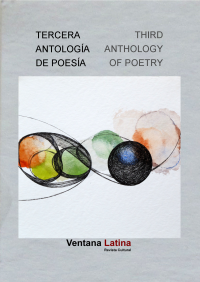Spectral histories: Art and the Colombian rubber industry
Our modern world owes a lot to a product native to Amazonia: natural rubber. As well as its contribution to the automobile and aviation industries in the form of the tyre, natural rubber is employed in a range of other products: from hoses and industrial belts to gloves, syringes, telegraph cables and condoms. A history of forced labour and brutality, however, lurks behind rubber production.
In his project El Encanto, which borrows its name from one of the sites where Casa Arana (a Peruvian rubber company) operated, London-based artist Freddy Dewe Mathews documents traces of the industry that linger still in the Putumayo region in Colombia. As this is a remote region with a dark history, we asked Freddy to explain why he’s dedicated so much time and energy to work on this project.
— Luciana Martins
LM: What drew you to this project in the first place?
FDM: I remember being first drawn to the subject from having a vague understanding of the process of tapping a rubber tree. Being somehow indirectly aware of how a tree produces this rather spectral white material and that was something that made me curious. Whilst it’s never been something I have consciously developed, an identifiable thread in my work is whiteness and the aesthetics of whiteness in nature.
In 2013, I was on a residency in Bolivia and I used the opportunity to start talking to an NGO in Santa Cruz, where I was based, about whether there were still producers of rubber in Bolivia. I made a rather eventful journey out to search for some of these small-scale producers in the Bolivian Amazon towards the border with Brazil. It turned out these producers didn’t actually exist where I had been told, but the trees still did and a local man, whose uncle had taped rubber some 40 years earlier, guided me to them and with the same tool his uncle would have used, opened one of them up. Seeing that process in the flesh really drew me in – especially the idea that the tree still held the scars from when industry existed.
But this was really before I began to read about the history of the industry and became familiar with what happened not only in the Amazon but on to the plantations in Asia, even in the Congo with King Leopold and more recently with Firestone in Liberia. My particular interest in the Putumayo came when I read Micheal Taussig’s book, Shamanism, Colonialism and the Wild Man. It was then that I decided that if I wanted to make a project on this material it would need to focus on that particular site, so I began to work out how I would make my way there.
LM: Tell us a little about Sir Roger Casement and how he fits into your interests.
FDM: Casement’s part in this story is that he was sent to investigate the Peruvian Amazon Company, a rubber collecting company run by Julio Arana, that was accused of abusing indigenous populations in the Putumayo. Casement arrives there in 1910. While in the Putumayo, he wrote various diaries which would become a key element of his trial when he was arrested some 6 years later smuggling arms to topple the same government that was his employer in Peru. There is a huge amount of context that is needed to understand his story.
But what really interested me in his story were certain aesthetic aspects of it –in the context of the rubber industry and those processes I had first seen in Bolivia. Casement was a gay man and was having intimate relations with men during his trip to the Putumayo as we learn from his diaries. These revelations at the time changed the public impression of him and still, to this day, complicate how we remember him. This sexual element of the story appeals to the visual nature of the tree being tapped, which is itself an intimate relationship between the tapper and the tree, where the body of that tree is manipulated to produce a white substance, something that happens deep in the forest away from the gaze of others. While these parallels may seem crass, having seen that process first-hand they where extremely striking. I was further drawn to make these parallels when I was in the Putumayo and I heard about the mythology – common throughout Amazonia – of the pink dolphin, a river dolphin common in the Amazon that has a widespread belief associated with it: it can transform itself into a man dressed in a white linen suit that tempts young indigenous into the water, never to be seen again. The debt these ideas and the images connected to them have to the rubber industry is very strong.
images © Freddy Dewe Mathews
LM: You had a long period of fieldwork in Colombia. How did this influence your work?
FDM: It was a great privilege to be able to spend 9 months in Bogotá on a residency (British Council Residency Programme at FLORA – 2016). It gave me access to a lot of materials I would not have come across in London and the chance to meet anthropologists based there. And it also allowed me to travel further into the areas I was interested in.
It also gave me the opportunity to see the story from a different perspective. Somehow the way the history is written from the UK seems to focus on the British as a kind of saviors and that their involvement in the investigation and trail of Casa Arana is given a greater significance than it might deserve.
Whereas in Colombia you are told that if the Casa Arana hadn’t been able to register in London and receive British investment it would never have been able to expand in the way that it did, to reach the areas it did and exploit the communities it profited from. Profits that were enjoyed by the Britons who had financed it.
And while the trial may have been a noble effort it had very little actual effect in the Putumayo, where the company continued to exist for some years until the price of rubber was driven so low by plantations in Asia.
These stories are far more complicated than the reductive terms I am using to explain them but it was interesting to see it nevertheless from two contrasting perspectives.
LM: Re-assessing the past seems to be a recurring theme in your work. Why does it appeal to you?
FDM: I am attracted to the idea that history is malleable and deeply subjective and I feel that the histories that I have tended to look at, which are of remote subjects, represent this particularly succinctly. To the extent that the explorers that were drawn there and even someone like Casement who was tasked with being objective are actually fairly unreliable and consequently make for interesting reading. Especially when you can see the narratives created as they develop, becoming ever more difficult to separate from the reality.
I want my work to create a space where these stories can be looked at in a very conscious way, examining how we regard these histories once we are aware of how our sense of them shifts with the perspective of time.
LM: You use different media in your work. How do you decide which one is more adequate to express your art? Could you let us know, for example, why are you using 16mm in this show?
FDM: There is no specific rationale for why one subject may end up expressed in a certain way. It’s more that techniques and processes are developed alongside the research and journeys that I make. Sometimes, in fact, the same ideas may be expressed in various different media in the same exhibition, almost as a way to make an example of something.
I always want to create a world that can be inhabited in my work and want that world to have many facets and materials, and that is why I have always been drawn to using different media.
16mm specifically is something I was looking at when I started to think about video loops. I wanted these to be made manifest and tangible in the exhibitions I was making and really the materiality of film was the best way to do that. The idea with these works is to make the audience aware of the way their perception of something that is essentially unchanging, a loop of film, evolves the longer they look at it.
Here, in this work specifically, using 16mm creates an exciting tension in the work, referencing the material that was used to first relay images of these remote areas by explorers and anthropologists. Often people will see the images without being certain whether the footage is archival or not. This is something that plays with the idea of the distance we have from these subjects.
El Encanto is at Birkbeck’s Peltz Gallery, London, from 6 April to 4 May 2017:
http://www.bbk.ac.uk/arts/research/peltz-gallery/peltz-gallery-exhibitions-and-events/el-encanto-exhibition




 Copyright © 2024
Copyright © 2024